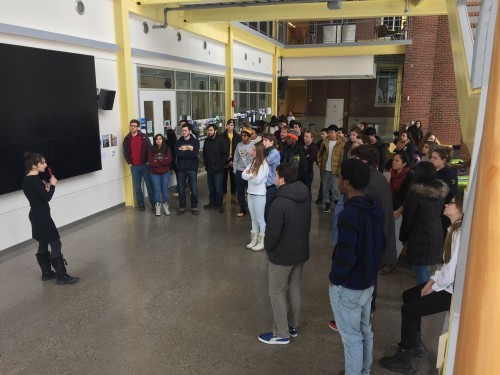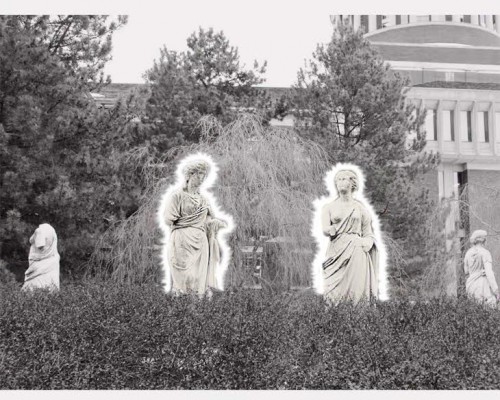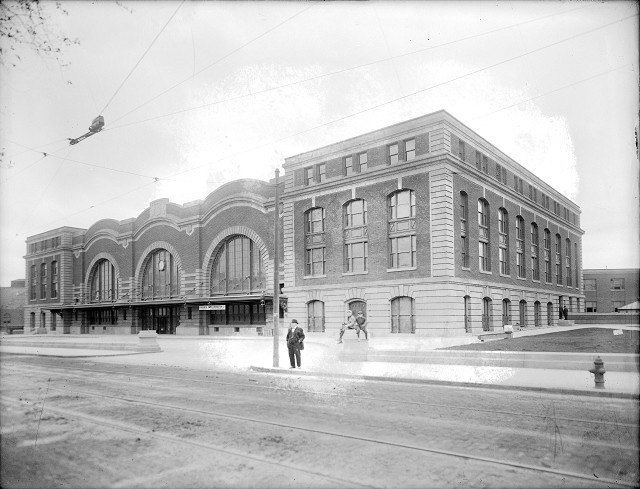DMS 103: Essential Digital Media Toolkit is a project-based course in which students are introduced to an array of softwares and technologies that are indispensable to digital humanities research. Curated by Stephanie Ashenfelder, a practicing artist and Studio Arts program coordinator at The University of Rochester, the course is designed to provide technical proficiency through experimentation and creativity. Thus far, students have completed projects using Photoshop, ArcGIS, and Final Cut Pro X.

Tara Najd Ahmadi, an Iranian artist, filmmaker, and animator, led a two-week crash course in Photoshop that culminated with a large installation of student photography. The project required students to take three photographs of either interior or exterior spaces in Rochester, and to manipulate them in Photoshop. Additionally, students were asked to critically consider how thematic continuity could be expressed through digital manipulation and careful image selection. Collectively, the images were displayed in a seamless band on the first floor of Rettner Hall, the campus laboratory for media innovation, digital scholarship, and fabrication/design. The panoramic landscape stitched together by students provided viewers with an opportunity to explore the many facets of life in Rochester as experienced by students through the medium of digital photography.



